Jazz dance is a performance dance and style that arose in the United States in the mid 20th century. Jazz dance may allude to vernacular jazz, Broadway or dramatic jazz. The two types expand on African American vernacular styles of dance that arose with jazz music. Vernacular jazz dance incorporates ragtime moves, Charleston, Lindy hop and mambo. Popular vernacular jazz dance performers include The Whitman Sisters, Florence Mills, Ethel Waters, Al Minns and Leon James, Frankie Manning, Norma Miller, Dawn Hampton, and Katherine Dunham. Dramatic jazz dance performed on the show stage was promoted by Jack Cole, Bob Fosse, Eugene Louis Faccuito, and Gus Giordano.
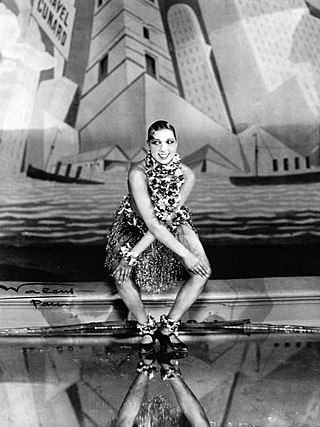
The Charleston is a dance named after the harbor city of Charleston, South Carolina. The rhythm was popularized in mainstream dance music in the United States by a 1923 tune called "The Charleston" by composer/pianist James P. Johnson, which originated in the Broadway show Runnin' Wild and became one of the most popular hits of the decade. Runnin' Wild ran from 28 October 1923, through 28 June 1924. The peak year for the Charleston as a dance by the public was mid-1926 to 1927.
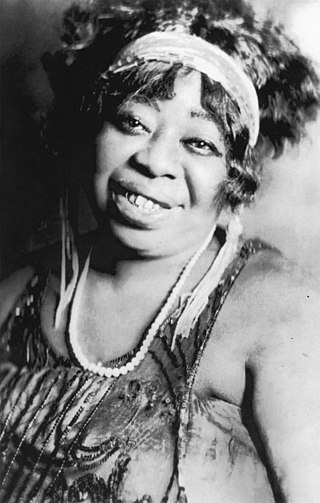
Gertrude "Ma" Rainey was an American blues singer and influential early-blues recording artist. Dubbed the "Mother of the Blues", she bridged earlier vaudeville and the authentic expression of southern blues, influencing a generation of blues singers. Rainey was known for her powerful vocal abilities, energetic disposition, majestic phrasing, and a "moaning" style of singing. Her qualities are present and most evident in her early recordings "Bo-Weevil Blues" and "Moonshine Blues".

The Ziegfeld Follies were a series of elaborate theatrical revue productions on Broadway in New York City from 1907 to 1931, with renewals in 1934, 1936, 1943, and 1957. They became a radio program in 1932 and 1936 as The Ziegfeld Follies of the Air.

Charles Luckyth Roberts, better known as Luckey Roberts, was an American composer and stride pianist who worked in the jazz, ragtime, and blues styles. Roberts performed as musician, band/orchestra conductor, and dancer. He taught music and dance. He also owned a restaurant and bar in New York City and in Washington, D.C. Luckey Roberts noted compositions include "Junk Man Rag", "Moonlight Cocktail", "Pork and Beans" (1913), and "Railroad Blues".
The United States of America is the home of the hip hop dance, salsa, swing, tap dance and its derivative Rock and Roll, and modern square dance and one of the major centers for modern dance. There is a variety of social dance and performance or concert dance forms with also a range of traditions of Native American dances.

George White's Scandals were a long-running string of Broadway revues produced by George White that ran from 1919–1939, modeled after the Ziegfeld Follies. The "Scandals" launched the careers of many entertainers, including W. C. Fields, the Three Stooges, Ray Bolger, Helen Morgan, Ethel Merman, Ann Miller, Eleanor Powell, Bert Lahr and Rudy Vallée. Louise Brooks, Dolores Costello, Barbara Pepper, and Alice Faye got their show business start as lavishly dressed chorus girls strutting to the "Scandal Walk". Much of George Gershwin's early work appeared in the 1920–24 editions of Scandals. The Black Bottom, danced by Ziegfeld Follies star Ann Pennington and Tom Patricola, touched off a national dance craze.

Ned Wayburn(néEdward Claudius Weyburn; 30 March 1874 – 2 September 1942) was an American choreographer.

Ma Rainey's Black Bottom is a 1982 play – one of the ten-play Century Cycle by August Wilson – that chronicles the 20th-century African-American experience. The play is set in a recording studio in 1920s Chicago, and deals with issues of race, art, religion, and the historic exploitation of black recording artists by white producers.
Classic female blues was an early form of blues music, popular in the 1920s. An amalgam of traditional folk blues and urban theater music, the style is also known as vaudeville blues. Classic blues were performed by female singers accompanied by pianists or small jazz ensembles and were the first blues to be recorded. Ma Rainey, Bessie Smith, Ethel Waters, and the other singers in this genre were instrumental in spreading the popularity of the blues.

Anna Pennington was an American actress, dancer, and singer who starred on Broadway in the 1910s and 1920s, notably in the Ziegfeld Follies and George White's Scandals.
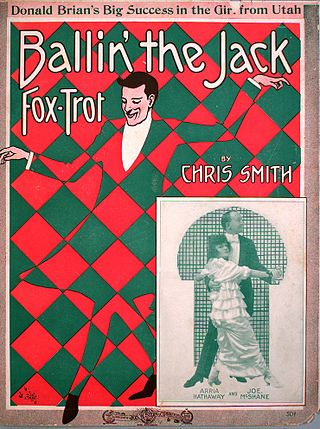
"Ballin' the Jack" is a popular song from 1913 written by Jim Burris with music by Chris Smith. It introduced a popular dance of the same name with "Folks in Georgia's 'bout to go insane." It became a ragtime, pop, and traditional jazz standard, and has been recorded hundreds of times.
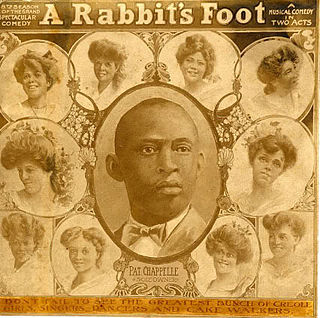
Black Vaudeville is a term that specifically describes Vaudeville-era African American entertainers and the milieus of dance, music, and theatrical performances they created. Spanning the years between the 1880s and early 1930s, these acts not only brought elements and influences unique to American black culture directly to African Americans but ultimately spread them beyond to both white American society and Europe.

George White was an American theatrical and film producer and director who also was an actor, choreographer, composer, dancer, dramatist, lyricist and screenwriter, as well as a Broadway theater owner.

Irvin Colloden Miller was an American actor, playwright, and vaudeville show writer and producer. He was responsible for successful theater shows including Broadway Rastus (1921), Liza (1922), Dinah (1923), which introduced the wildly popular black bottom dance, and Desires of 1927 starring Adelaide Hall. For thirty years he directed the popular review, Brown Skin Models, influenced by the Ziegfeld Follies but exclusively using black performers. "In the 1920s and 1930s, he was arguably the most well-established and successful producer of black musical comedy."
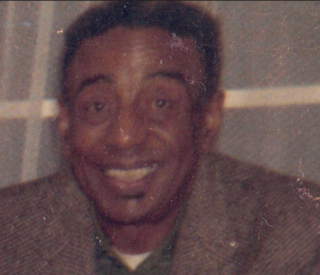
Buddy Bradley was an African-American dancer and choreographer of the 1930s and later.
Tom Patricola was an American actor, comic and dancer who starred in vaudeville and motion pictures. Born in New Orleans, Patricola established his fame as a hoofer, becoming a leading interpreter of the Black Bottom dance.
Billy Pierce was an African American choreographer, dancer and dance studio owner who has been credited with the invention of the Black Bottom dance that became a national craze in the mid-1920s.

Leonard Harper was a producer, stager, and choreographer in New York City during the Harlem Renaissance in the 1920s and 1930s.
Mae Barnes was an American jazz singer, dancer and comic entertainer. She was responsible for introducing the Charleston dance to Broadway in the 1924 revue Runnin' Wild. After her career as a dancer ended, she became a successful nightclub singer and recording artist.















